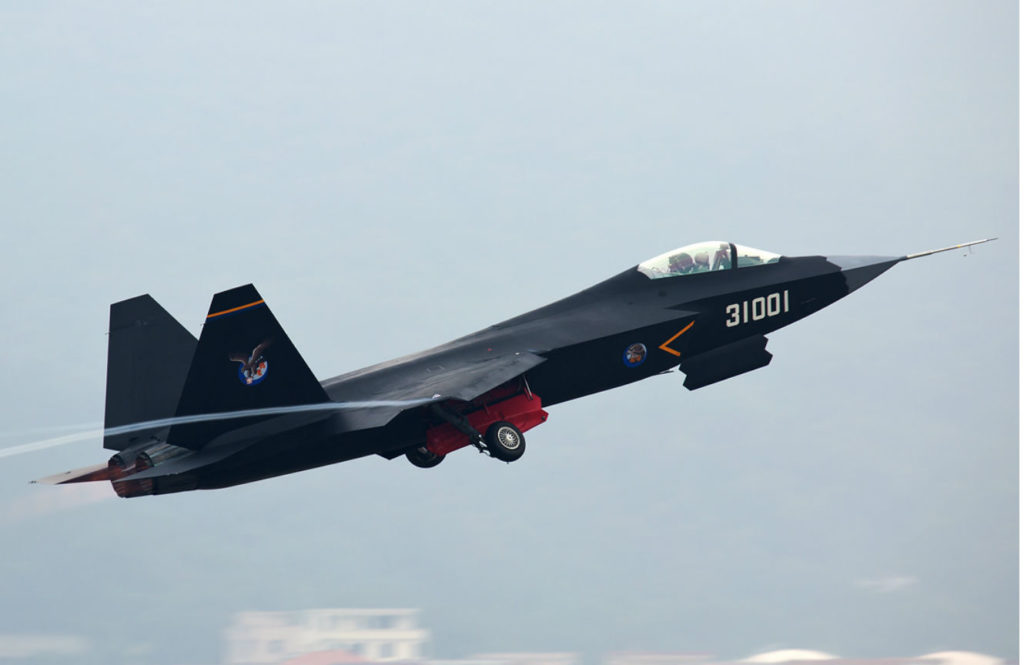

Surely you have heard the news — China has been dredging up coral reefs and creating artificial islands in the South China Sea with the purpose of enforcing their claims to “indisputable sovereignty” of their “Nine Dash Line”, and has defiantly continued to do so in the face of legal condemnation by the Hague’s Permanent Court of Arbitration. While the reactions of the United States and other nations to China’s island-building campaign have been vocal, some U.S. analysts and experts have been largely dismissive of the new islands’ potential effects on the regional balance of power. A recent RAND study stated:
[T]hese facilities could host a handful of SAMs and fighter aircraft…[but] they are unlikely to be a significant factor in high-intensity military operations against U.S. forces beyond the first hours of a conflict.
Another analyst declared as a myth the possibility of that these new bases could alter the balance of power, stating that, “In the age of precision strike, any and almost all fixed targets can be destroyed with ease.” But the potential combination of China’s premier anti-ship and anti-air capabilities — along with the sheer, breathtaking scale of China’s island-building — call for serious consideration of the faux islands’ potential impact to U.S. diplomacy and contingency planning, as well as the need to take all possible measures to prevent their full militarization.
Going Big in the Spratly Islands: China’s New Airfields Point Major Commitment of Forces
While the Chinese government has consistently claimed that its land reclamation projects are intended for non-military purposes, and Chinese President Xi has pledged that China does not intend to militarize them, recent imagery shows large-scale construction of airfields and base facilities. The most significant base-building has been concentrated at what I term the “big three”: Fiery Cross, Subi, and Mischief Reef. All three of these new islands will have approximately 10,000 foot runways, deep water harbors, and enough reinforced hangars to house 24 fighters as well as bombers, tankers, and airborne early warning aircraft. Just as significant are the other airfield support facilities China appears to be constructing. As an example, a rough comparison of the size of Fiery Cross’s airfield areas with those of a mainland Chinese fighter base (Suixi Air Base, see Figure 1) shows that this facility is probably being constructed to support a unit the size of a Chinese fighter regiment (of note, China is in the process of converting their air units to multi-aircraft-type brigades, but this analysis of scale should hold for now). One can see on all three major islands the presence of 400-meter running tracks along with tennis and basketball courts, as well as block after block of what will likely be barracks, headquarters, workshops, and warehouses. China is even openly discussing plans to construct mobile nuclear power plants to provide electrical power to the islands. With more than 24 hangars under construction on each of the “big three” bases, this would allow all of a typical Chinese regiment’s fighters to be maintained indoors on each island. These do not seem intended as small airfields for occasional visiting aircraft. They look like major fighter bases in the making.
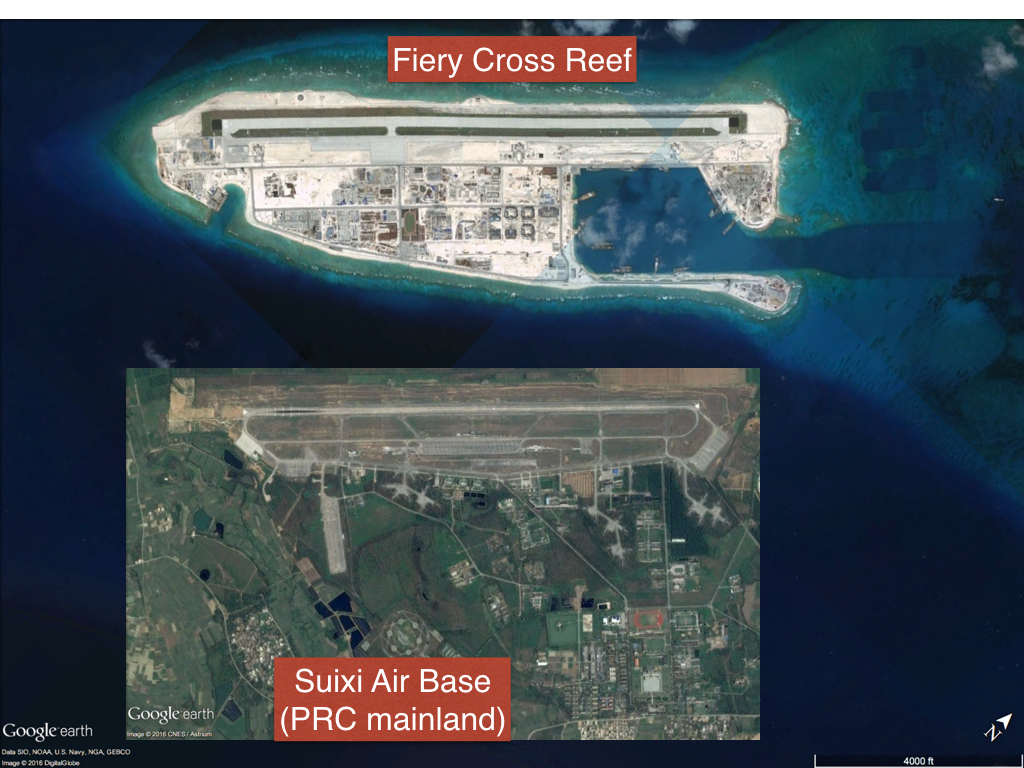
Figure 1: Fiery Cross Reef (upper) compared to Suixi Air Base (lower) — home to a regiment of PLAAF Flanker fighters. (same approximate scale).
One might think that China, surely, does not plan to base aircraft on these islands with the intent of using them to counter a U.S. intervention. After all, “a squadron of Su-27s flying out of Fiery Cross Reef ‘base’ would most likely be smoking wrecks within hours of the start of any South China Sea conflict.” But if that is not the intent, then why build three? Even before building the islands, China could easily have overwhelmed its regional competitors with naval surface action groups, an aircraft carrier, and land-based aircraft. If China had built just one island base with dozens of aircraft, it would have enjoyed an even greater overmatch against local rivals. But instead, China built three islands, each with facilities that appear large enough to host a fighter regiment (or brigade) and support aircraft. To put that in perspective, three such air regiments on the three islands would add up to a fighter division, a formation consisting of about 17,000 personnel, and a commitment indicating that China perhaps has a larger foe in mind.
Shields Up: A Deployment of China’s A2/AD systems Could Happen Overnight.
If China is building the “big three” to be able to deter or counter a U.S. regional intervention, its plans would likely include deployment of the “counter-intervention” (China’s term) anti-access/area-denial (A2/AD) system-of-systems that has already raised much concern in the United States. Given recent deployments to Woody Island (China’s outpost in the Paracel Islands) of HQ-9 surface-to-air missiles (SAMs, see Figure 2), YJ-62 anti-ship cruise missiles (ASCMs), and J-11 fighters, one could expect such deployments to the “big three” as well, perhaps joined by the precision-strike ballistic surface-to-surface (SSM) and land-attack cruise missiles (LACMs) of the PLA Rocket Forces (known formerly as the 2nd Artillery Corps). A look at the resulting effective range arcs (see Figure 3) shows that in a stroke, China would have an interlocking and mutually-supporting SAM umbrella over most of the Spratlys, as well as ASCM coverage over the heart of the South China Sea. Also, where the U.S. military could previously have been able to operate out of austere southern Philippines airfields beyond conventional ballistic or ground-launched cruise missile range, China would now be able to strike, with either DF-21C land-attack ballistic missiles or CJ-10 cruise missiles, U.S. and allied facilities and airfields throughout the Philippines and even to Singapore.
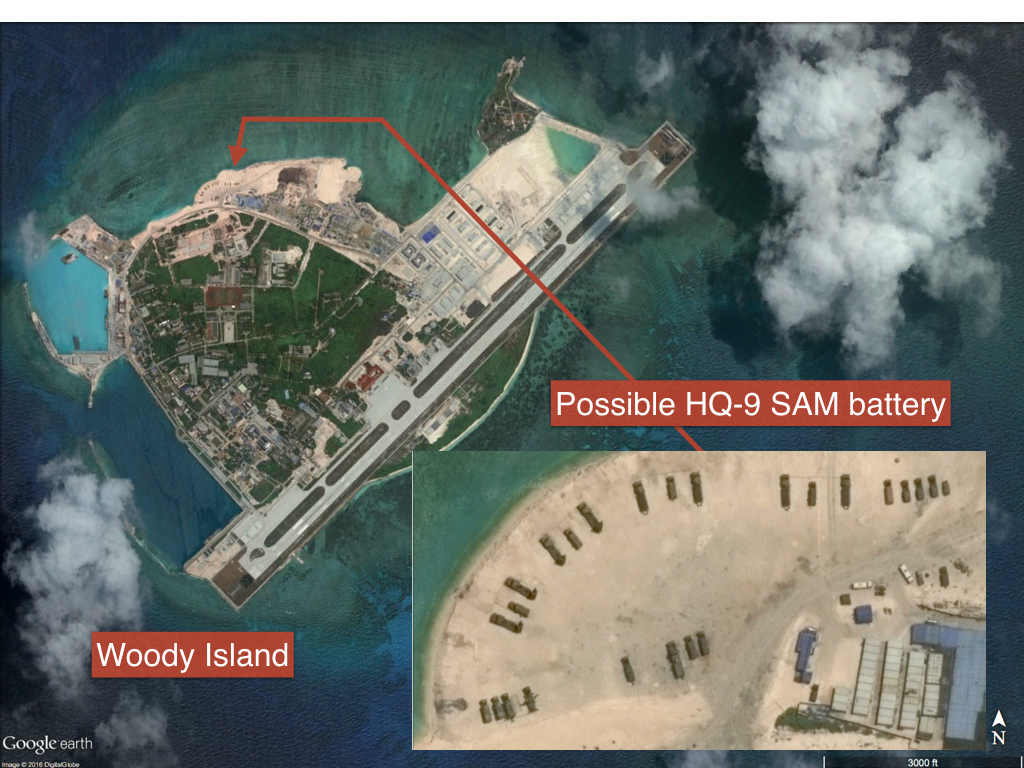
Figure 2: HQ-9 SAM battery deployed to Woody Island. Note the extensive newly-built land area and structures in the northeastern part of the island.
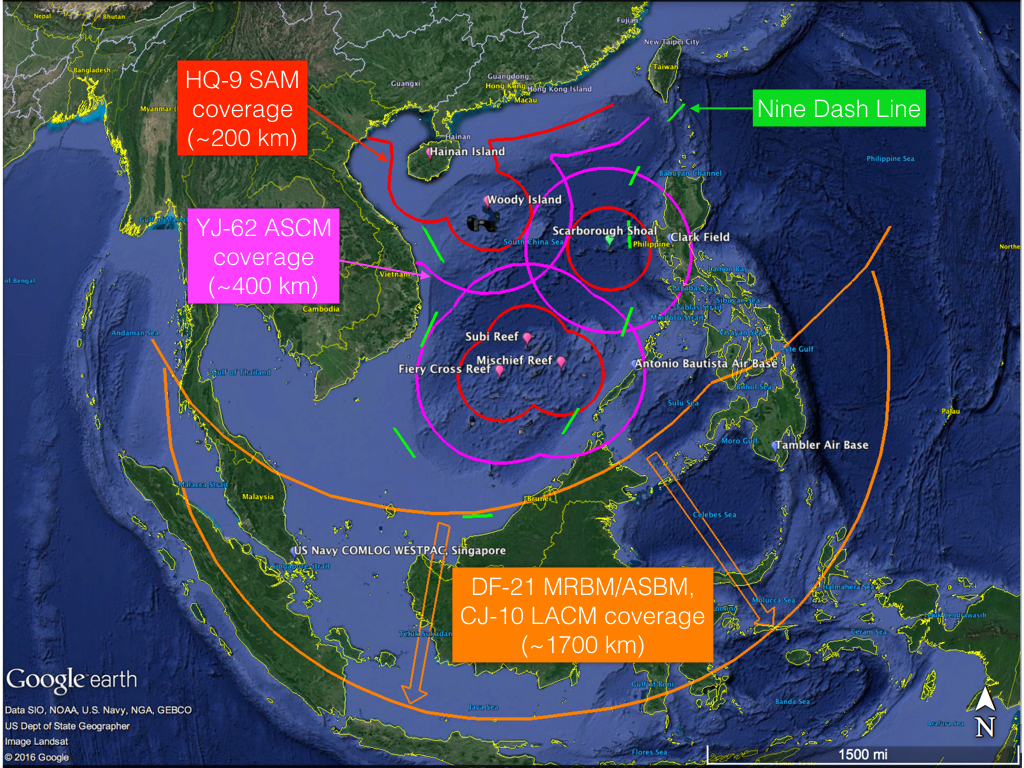
Figure 3: Range arcs depicting potential coverage of HQ-9 SAMs, YJ-62 ASCMs, and DF-21 ballistic missiles from China’s larger South China Sea island bases.
Areas of the Sulu and Celebes seas that would have been sanctuaries for U.S. aircraft carriers, beyond the range of DF-21D anti-ship ballistic missiles (ASBMs), could now be within range of ASBMs launched from the island bases. This development would further challenge the ability of U.S. aircraft carriers and their embarked air wings to operate at unrefueled striking range (about 500 nautical miles) with reasonable levels of risk in a Spratlys campaign.
The picture would become even worse were China to build and militarize a similar island base at Scarborough Shoal, which China seized from the Philippines in 2012 and which has seen increased activity of late. China’s A2/AD coverage would then encompass almost the entirety of the claimed area of the Nine Dash Line.
As a final note, since all of the premier Chinese A2/AD are road-mobile, a major deployment of them could happen almost overnight — all of the “big three” islands have deep water harbors that appear able to accommodate large roll-on/roll-off transports, a single one of which could likely transport the necessary personnel, trucks and transporters.
A Fool’s Errand? Island airbases in the Age of Precision Strike
Could the Chinese be seriously expecting these island bases to survive for long in the face of a U.S. intervention? Consider three things:
Regarding the first point above, you must understand just how big these islands are and what that says about China’s commitment. In reading about China’s reclamation campaign, a typical refrain is how many thousands of acres have been built up. But consider some comparisons: Fiery Cross is hardly a little runway perched on a reef. As shown above, its facilities are roughly the size of a typical mainland fighter base and it has a sizable harbor. Subi Reef is almost 50 percent larger again in area, and contains a massive enclosed deep-water harbor over two miles wide. A visual comparison of Subi Reef with Pearl Harbor (Figure 4) shows what a huge installation the Chinese have created from scratch.
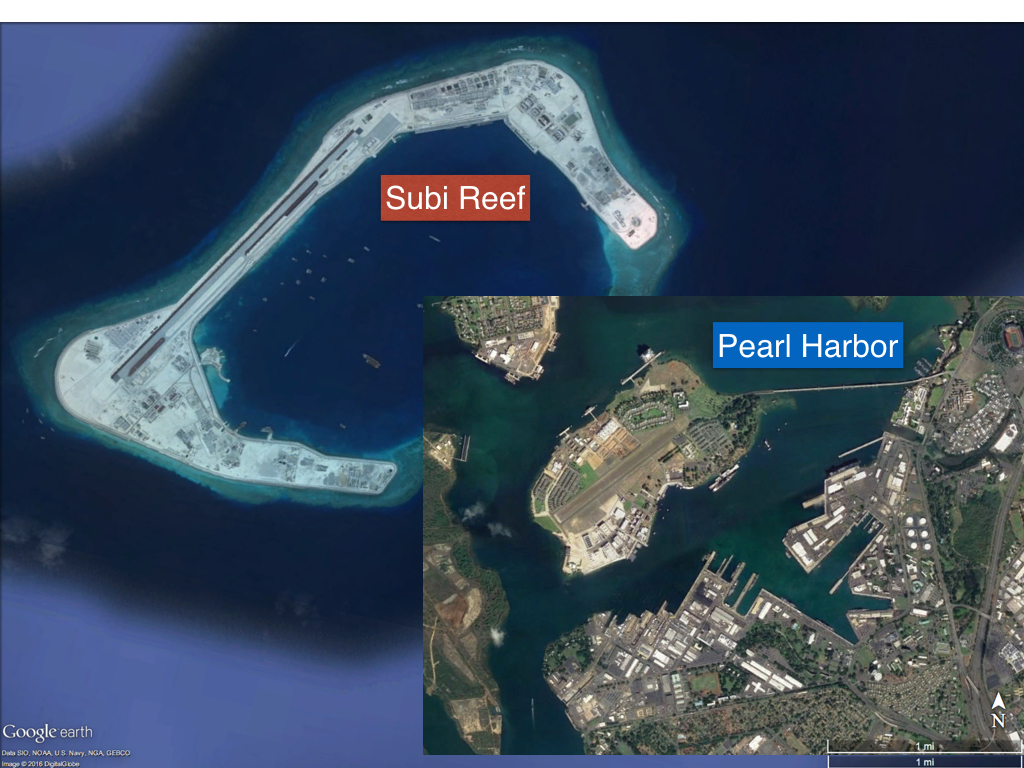
Figure 4: Subi Reef (upper left), main portion of Pearl Harbor’s naval base (lower right, same approximate scale).
Then, consider Mischief Reef. Compared to the other regional claimants’ islands and land reclamation projects, Mischief Reef dwarfs them. All of the other claimant nations’ biggest facilities combined would fit comfortably into half of Mischief’s huge lagoon. As another point of comparison, Mischief Reef’s land perimeter is nearly the size of the perimeter of the District of Columbia. China is clearly placing a massive bet on their new island bases.
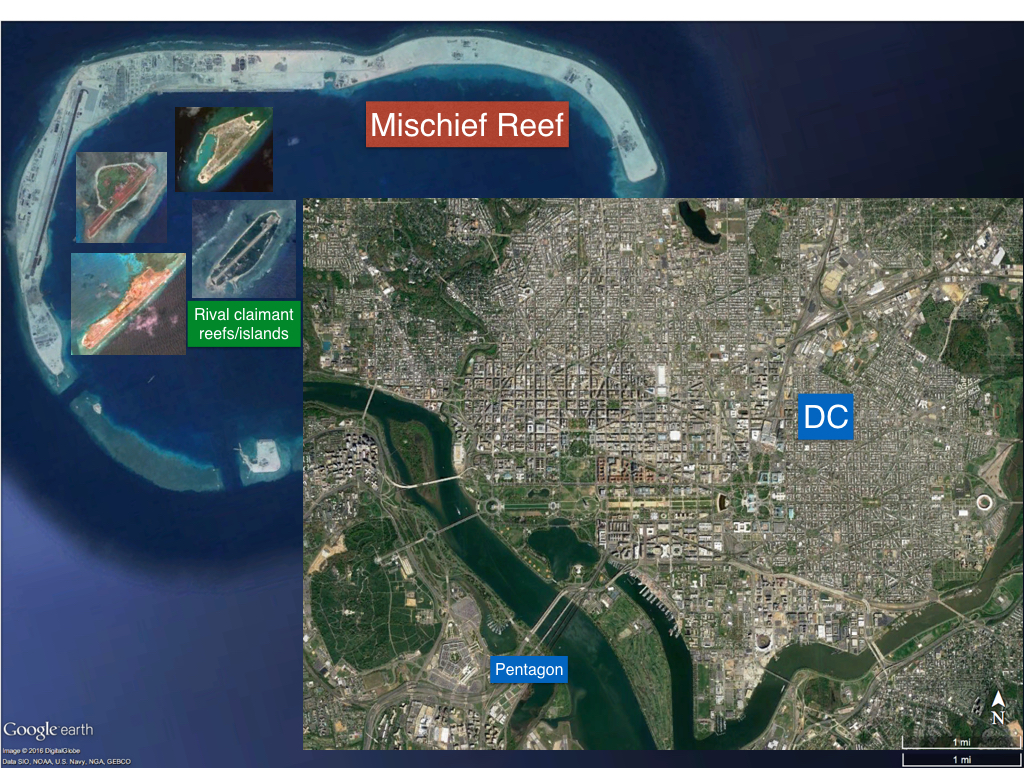
Figure 5: Mischief Reef with the airfields of the other Spratly Island regional claimants: Thitu Island (Philippines), Spratly Island (Vietnam), Swallow Reef (Malaysia) and Itu Aba (Taiwan) (upper left), District of Columbia (lower right, same approximate scale).
Assuming we take for granted that China has been paying attention to America’s precision strike capabilities (and they have), what actions might China be planning to ensure the effectiveness of its island bases in a high-intensity conflict? First, consider again that all of the high-end counter-intervention weapons systems discussed above are mobile systems. If they were to be perched on small outcrops of sand that fact might not matter much, but on islands the size of Subi or Mischief Reef, they would no longer be fixed targets patiently waiting in place for systematic destruction by standoff weapons. Mischief Reef’s land area is over eight miles around. If you were to drive around it at freeway speed it would take almost ten minutes. A lot of real estate would have passed by your window in that time, all of which China could use to spread out mobile systems to the point that an attacker could not expect to be able to just blanket the island with high explosives (at least the non-nuclear kind) and expect to destroy them. (Imagine as well the targeting headache that the presence of an operating nuclear power plant could add to the mix.) Even if U.S. aircraft were able to operate with impunity overhead in the face of dozens of Chinese fighters and advanced SAMs, success would not be assured: During previous U.S. experiences hunting mobile missiles with near-unchallenged air supremacy (the 1991 Gulf War), “on the 42 occasions…when orbiting strikers visually sighted mobile TELs, in only eight instances were they able to acquire the targets sufficiently well to release ordinance.”
In fact, the ability of mobile A2/AD systems to blend into a complex background has caused some analysts to assess that they may hold the upper hand against precision strike platforms in some cases:
Trucks can hide in forests or among buildings…large numbers of Quonset-hut-like structures, opaque to radar, could provide occasional concealment but would almost always be unoccupied and thus inefficient to attack. Other decoys are easy and cheap…a private Russian firm has developed entire inflatable decoy S-300 antiaircraft missile batteries…Finally, high-value ground targets can protect themselves with short-range terminal defenses, including radar-controlled guns.
And what, after all, might we be seeing under construction on the larger islands right now? We are seeing “unknown hexagonal structures” that could potentially be towers to mount guns or short range missiles. They are being built to grace each corner of the islands (fields of fire?). Each individual hexagonal cell is about the same size and shape of the anti-aircraft guns which are already emplaced at China’s smaller outpost at Gaven Reef. This could indicate that each corner of the larger islands will end up equipped with point defenses consisting of groups of five or six guns or short-range missile launchers (see Figure 6). Using massed short range anti-aircraft fire against incoming cruise missiles would echo the defensive tactics used to shoot down incoming kamikazes during World War II. In essence, the threat is comparable: small, explosive-laden aircraft flown in from seaward at subsonic speeds with a highly committed pilot.
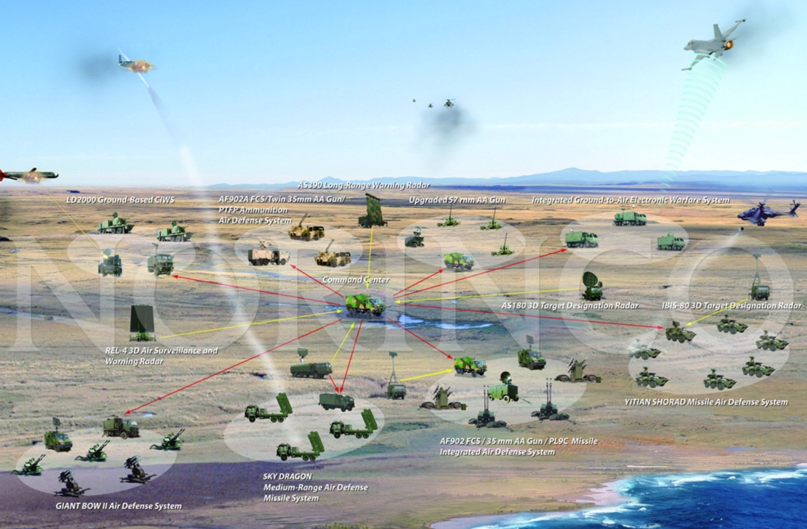
Figure 6: Notional IADs system with short range hybrid anti-aircraft batteries, under development by NORINCO, a Chinese defense supplier.
It may also be worth considering that China’s island bases are being built from scratch in the era of precision strike and are therefore able to have appropriate countermeasures “baked in” from the start. As examples, recent analyst recommendations from the Center for Strategic and Budgetary Assessment to reduce the lethality of salvos of precision guided munitions include the following:
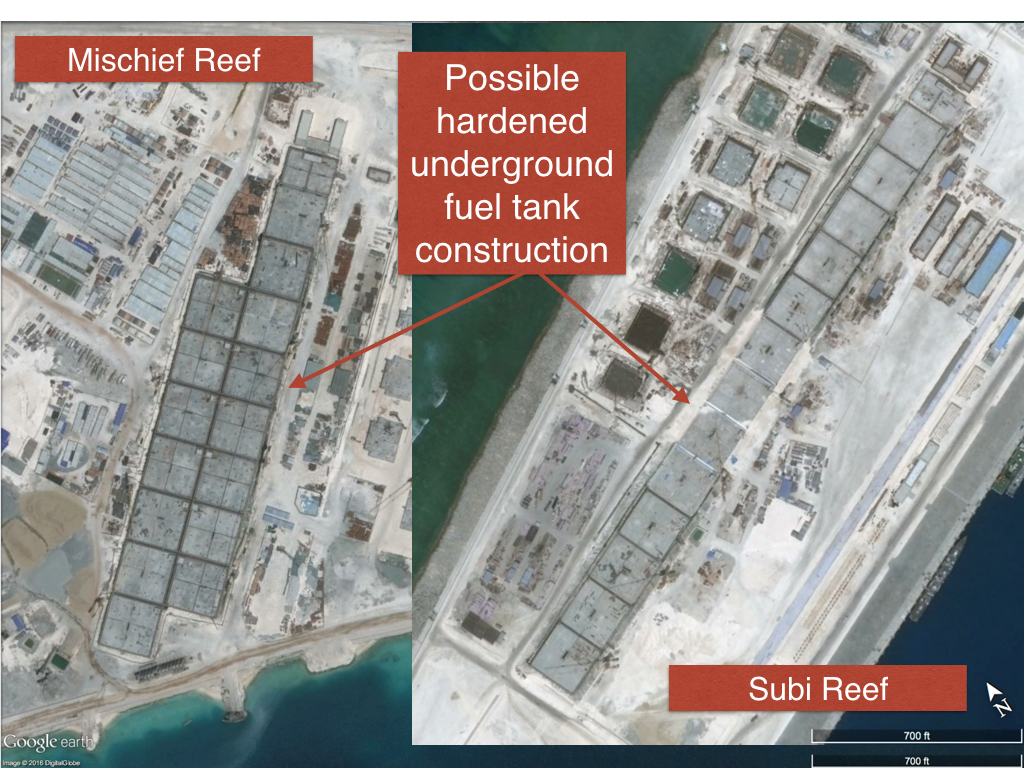
Fig. 7: Hardened underground fuel tanks under construction on Subi Reef?
No Easy Answers
With enough combat power brought to bear, China’s new island bases would be vulnerable to being overwhelmed. This sort of A2/AD problem set is one which is being addressed through efforts such as the Joint Operational Access Concept (JOAC), Joint Concept for Access and Maneuver in the Global Commons (JAM-GC), and third offset strategy. The question, really, is how much more effort and risk will be required once the islands are fully armed, and how long will it take to neutralize them during the crucial first salvos of a high-intensity conflict? It seems unlikely that the effort would be as trivial as may have been thought.
To ensure America’s continued ability to live up to its treaty commitments and uphold the maritime rule of law in the South China Sea with acceptable cost, action is necessary. First, the United States must make clear its expectation that China will abide by its promises not to conduct large-scale militarization of its South China Sea outposts, while conducting stepped-up Freedom of Navigation Operations to reinforce the real-world implications of the comprehensive Hague ruling against China. Perhaps some bottom depth surveys inside Subi and Mischief Reefs’ lagoons are in order to determine their post-dredging depths — after all, they are international waters.Second, the United States must dramatically accelerate implementation of the joint access-enabling operational and strategic concepts discussed above as well as the development of related weapons systems, and be seen to do so. Last, as construction of the “big three” approaches completion, the United States should watch carefully for any indications that a significant A2/AD force deployment is about to take place, and have a full-spectrum whole-of-government pre-planned response ready to stop it. U.S. military and political leaders should determine in the next few months exactly how far they are willing to go to prevent large-scale arming of the islands. Will it be diplomatic protestations alone, or is Washington willing to conduct something like a Cuban Missile Crisis-style quarantine? There are likely a range of options in between that perhaps have not been fully explored by policymakers.
Some China-watchers have said that China plays Go (a game of position), while America tends to be a poker player — daring its opponents to call its bets. By staking out its bold new positions in the South China Sea, China’s goal may be to up the ante to a point where the United States is faced with a tough choice: put a pile of chips on the table and risk huge losses or fold up its cards and go home. The United States should do what it takes now to ensure that the game doesn’t get to that point.
Thomas Shugart is a Senior Military Fellow at the Center for a New American Security and a submarine warfare officer in the U.S. Navy. The opinions expressed here are the author’s and do not represent the official position of the U.S. Navy, Department of Defense, or the U.S. government.
Image: Danny Yu, CC
